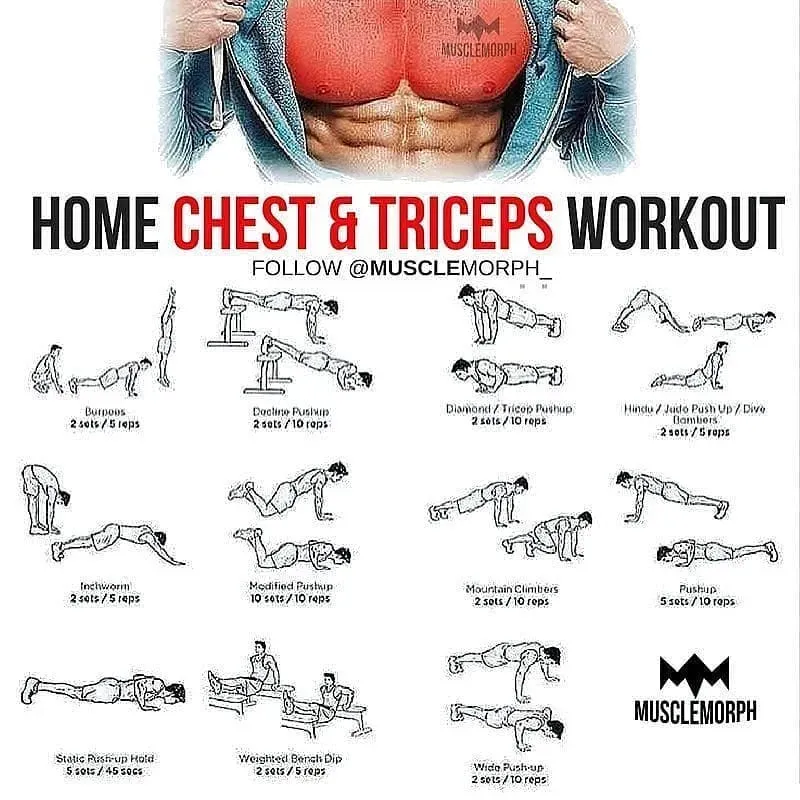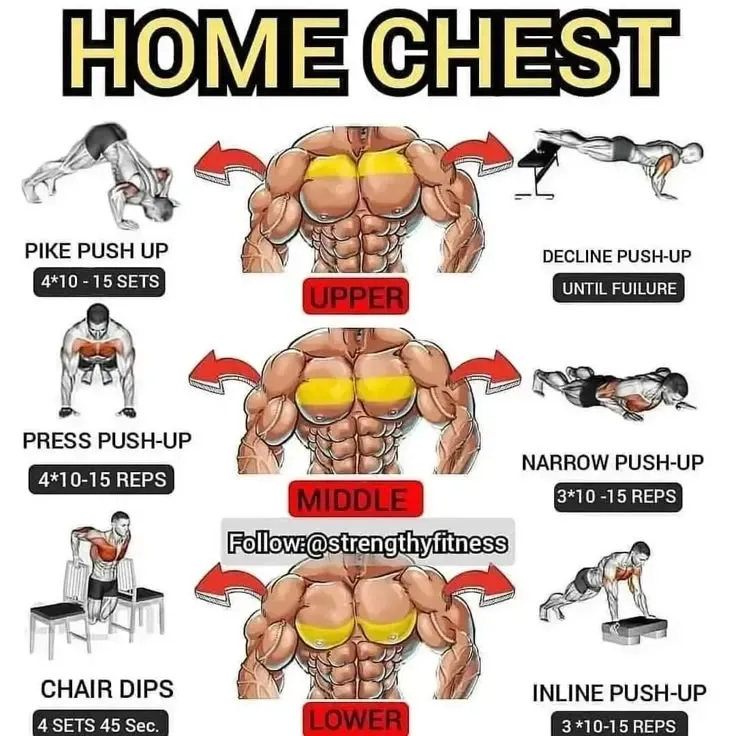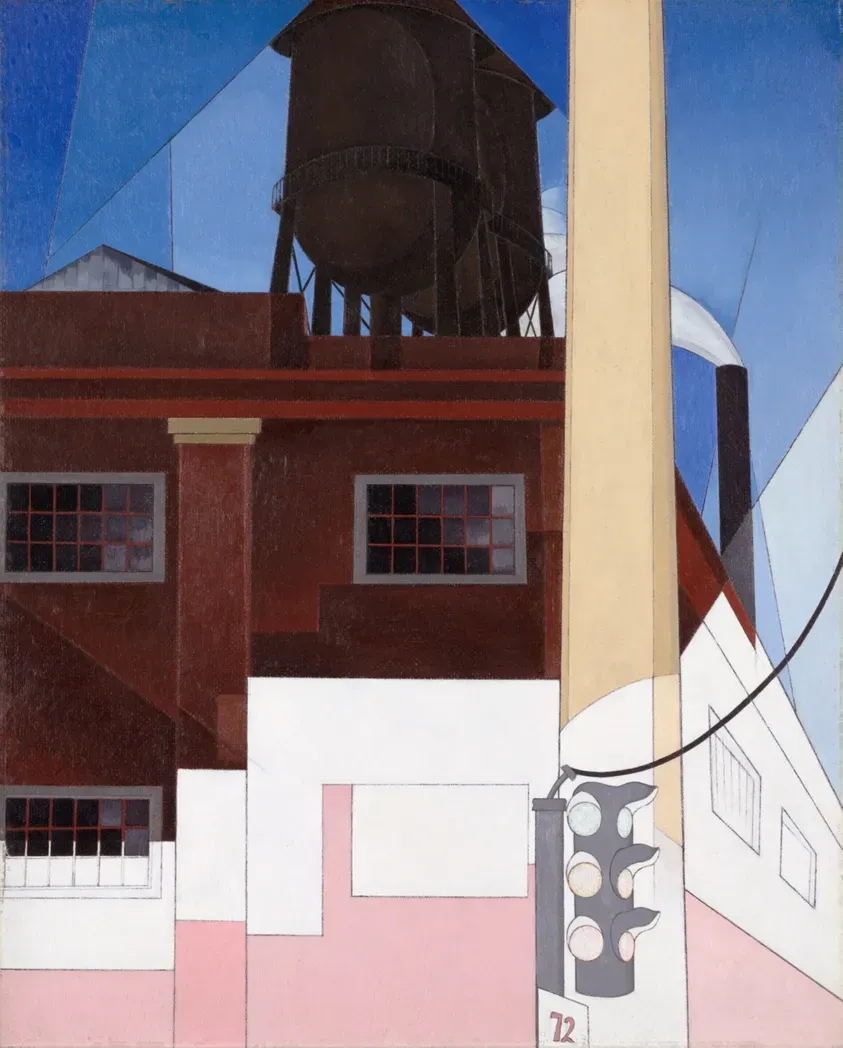Table of Contents
Let's be honest. Sometimes getting to the gym feels like a bigger workout than the one you planned to do once you got there. Between the commute, finding a locker, and waiting for equipment, it's enough to make anyone skip chest day. But what if you could build a solid, strong chest without ever stepping foot outside your front door? Good news, you absolutely can. We’re talking about an effectivechest workout you can do at home.
Understanding Your Chest Muscles for AtHome Gains

Understanding Your Chest Muscles for AtHome Gains
Alright, let's talk pecs. When you're aiming for a solidchest workout you can do at home, you're primarily targeting two main players: the Pectoralis Major and the Pectoralis Minor. Think of the Pec Major as the big slab of muscle covering the front of your chest, running from your collarbone down towards your sternum and attaching to your upper arm bone. This is your powerhouse for pushing movements, like pushing a door open or, more relevantly, pushing yourself off the floor in a push-up. The Pec Minor sits underneath the Pec Major, a smaller triangular muscle that helps stabilize your shoulder blade and assists in some movements. To really get results at home, you need to hit these muscles from slightly different angles, which is where variations on basic movements become your best friend.
- Pectoralis Major: The big one, main pusher.
- Pectoralis Minor: The smaller one underneath, helps stabilize.
- Hitting different angles is key for full development.
Effective Bodyweight Chest Workout You Can Do At Home

Effective Bodyweight Chest Workout You Can Do At Home
Mastering the Foundational Push-Up
When you think of a bodyweight chest workout you can do at home, the first thing that pops into most people's heads is the push-up. And for good reason! It's the absolute cornerstone of at-home chest training. A standard push-up hits your Pec Major like a truck, along with your triceps and shoulders. Getting the form right is crucial though. Hands slightly wider than shoulder-width, fingers pointing forward, body in a straight line from head to heels. Lower yourself until your chest is just above the floor, keeping your elbows tucked slightly towards your body, not flaring straight out.
If a standard push-up is too tough right now, don't sweat it. Start on your knees. This reduces the load but still allows you to work through the full range of motion. As you get stronger, transition to full push-ups. If they become too easy, elevate your feet on a chair or couch to increase the difficulty and shift more focus to the upper chest. You can also play with hand placement – wider for more outer chest, narrower (diamond shape) for inner chest and triceps.
Exploring Variations and Progression
Beyond the standard variations, bodyweight training offers a playground for hitting your chest from different angles. Incline push-ups, done with your hands elevated on a sturdy surface like a counter or table, are great for beginners or for high-rep sets. They target the lower portion of the Pec Major more. Conversely, decline push-ups, with your feet elevated, hammer the upper chest and make the movement significantly harder. Plyometric push-ups, where you push up explosively enough for your hands to leave the ground, build power and can add a different stimulus once you have a solid strength base.
Don't feel limited to just one type per workout. Mixing and matching variations is key to a well-roundedchest workout you can do at home. Maybe start with decline push-ups for strength, move to standard push-ups for volume, and finish with some knee push-ups to failure. Listen to your body, focus on controlled movements, and aim for progressive overload – doing more reps, sets, or a harder variation over time.
- Standard Push-Up: Chest, triceps, shoulders. Keep body straight.
- Knee Push-Up: Easier version, same muscle focus.
- Incline Push-Up: Hands elevated, targets lower chest.
- Decline Push-Up: Feet elevated, targets upper chest, harder.
- Diamond Push-Up: Hands close, targets inner chest and triceps.
Adding Simple Equipment to Your Chest Workout You Can Do At Home

Adding Simple Equipment to Your Chest Workout You Can Do At Home
Adding Simple Equipment to Your Chest Workout You Can Do At Home
so bodyweight push-ups are fantastic and form the bedrock, but maybe you're ready for a little extra oomph. This is where some simple, affordable equipment can seriously elevate yourchest workout you can do at home. We're not talking about building a full commercial gym in your spare bedroom. A pair of adjustable dumbbells or even just some resistance bands can open up a whole new world of exercises and allow for better progressive overload. Dumbbells let you do classic movements like the bench press and chest fly, mimicking gym exercises but with the convenience of home. Resistance bands offer variable tension, which can be a unique stimulus for the muscles, feeling easier at the bottom of the movement and harder at the top. They are also incredibly portable and easy to store.
- Adjustable Dumbbells: Versatile for pressing and fly movements.
- Resistance Bands: Provide variable tension, great for flyes and presses.
- Doorway Pull-Up Bar: Can be used for dips (if sturdy) or inverted rows that hit the chest.
- Bench or Sturdy Chairs: Essential for dumbbell presses and flyes, or elevating feet for push-ups.
Structuring Your AtHome Chest Routine and Avoiding Common Errors

Structuring Your AtHome Chest Routine and Avoiding Common Errors
Building Your Weekly Chest Workout at Home
so you've got the exercises down – push-ups, maybe some dumbbell presses or flyes if you have them. Now, how do you actually put it all together into a routine that makes sense and gets results? Consistency is king here. You can't just randomly do a few push-ups every now and then and expect your chest to transform. Aim for 2-3 chest workout sessions per week, allowing at least a day of rest in between for muscle recovery. For each session, pick 3-5 exercises that hit the chest from different angles. If you're just starting with bodyweight, this might look like standard push-ups, incline push-ups (hands on a chair), and maybe some diamond push-ups.
Decide on your rep and set scheme. For building muscle, hitting 3-4 sets of 8-15 repetitions per exercise is a solid target. If you can easily do more than 15 reps with good form on a bodyweight exercise, it's time to make it harder – elevate your feet, slow down the tempo, or try a more challenging variation. The goal is to challenge the muscle, not just move through the motion. Keep track of what you did each workout – how many reps, how many sets, which variations. This is how you ensure you're making progress over time, which is the core of any effectivechest workout you can do at home.
Sidestepping Common Pitfalls
Just like in the gym, there are traps you can fall into when doing a chest workout you can do at home. One of the biggest is sacrificing form for quantity. Doing sloppy, half-rep push-ups just to hit a higher number isn't doing your chest any favors and increases your risk of injury. Focus on controlled movements, going through the full range of motion. Another common mistake is neglecting other muscle groups. While you're focused on your chest, remember that pushing movements also involve your shoulders and triceps, and pulling movements (like rows or pull-ups, even inverted rows using a table) are crucial for balanced development and shoulder health. Don't just do chest and ignore your back.
Overtraining is also a real risk, even with bodyweight. If your chest is still significantly sore from your last workout, give it another day of rest. Pushing through intense pain is foolish, not dedicated. Finally, don't get discouraged if you don't see massive changes overnight. Building muscle takes time and consistent effort. Stick to your plan, focus on quality over quantity, and be patient. Progress might look like adding a rep or two, being able to do a slightly harder variation, or simply feeling stronger during everyday pushing tasks.
- Aim for 2-3 chest sessions weekly.
- Select 3-5 exercises hitting different angles.
- Target 3-4 sets of 8-15 reps per exercise (or to challenging failure).
- Prioritize proper form over high rep counts.
- Don't neglect your back muscles for balanced strength.
- Listen to your body and allow for adequate rest.
- Track your progress to ensure consistent challenge.
Your At-Home Chest Journey Continues
Building a strong chest doesn't require a monthly membership or waiting in line for equipment. As we've covered, understanding the muscles, utilizing effective bodyweight movements, and perhaps adding some basic dumbbells provides a solid foundation. Consistency remains the critical factor. Pick the exercises that work for you, progress as you get stronger, and stick with it. The tools are literally at your fingertips, or more accurately, under your hands and chest. Now, the only thing left is to actually do the work.
